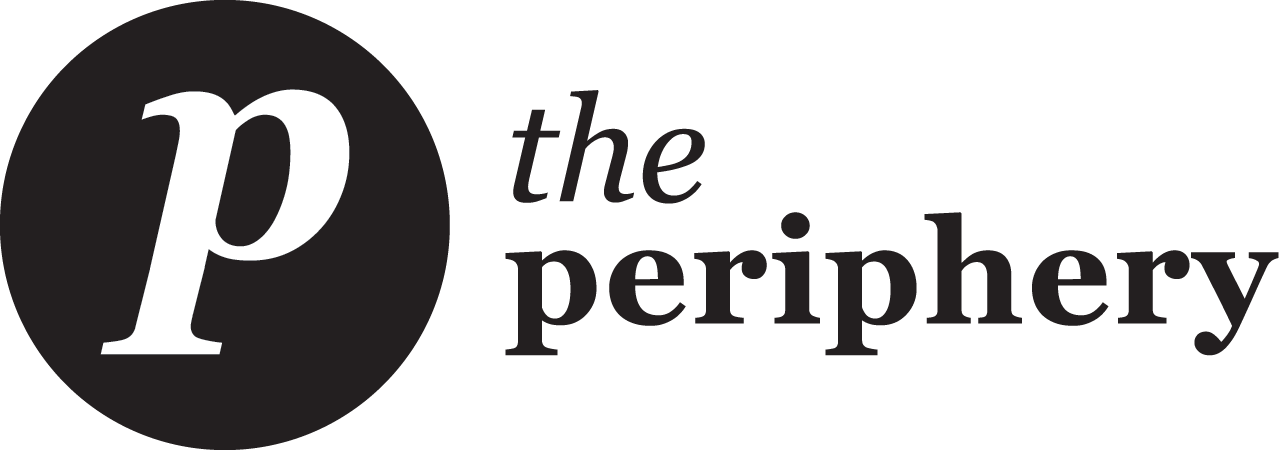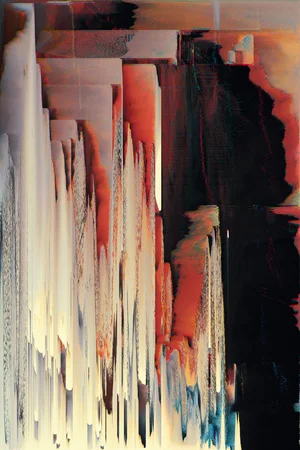Interview with Sabato Visconti, a Brazilian artist based in Massachusetts who experiments with glitch art processes. He speaks on his work's themes, his inspiration, and the potential of the glitch art movement.
© 2014 Sabato Visconti, "#12, Bygones"
© 2014 Sabato Visconti, "#23"
The Periphery: What defines glitch art for you – and what is decidedly NOT glitch art?
Sabato Visconti: Glitch art is a series of artistic practices that creatively use software error, digital file corruption, hardware malfunction, algorithmic logic, and other alternative processes. Glitch artists usually differ on what really “counts” as glitch art. For me, coming from a background in photography and video production, glitch art is about perverting digital workflows through the use of unlikely tools and methods. One doesn’t simply open up Photoshop and whip up glitches with layers and filters; there has to be some consideration given to file formats, hardware, and so forth.
P: What's unique about communicating through glitches that cannot be communicated through other mediums?
SV: Since digital devices and software understand visual information in a radically different way than humans do, glitch art presents a unique and sometimes challenging visual vernacular. Glitch art has a way of exposing the coded logic behind things, and this tendency lends itself to conveying a wide variety of messages, whether it is aesthetic, political, or even emotional. Every glitch bears traces of failure and death.
P: Do you feel the artist's process matters more with glitch art than other more traditional forms of art?
SV: I think this depends on the artist and their work. For me, while the process is essential to the finished work, I think it’s important that my images speak for themselves.
P: What themes do you try to evoke in your art?
SV: When I started glitching my photographs, my concerns were mostly personal and existential: the impermanence of memory, the transient nature of relationships, the fragility of appearances, or Vertigo, my favorite Hitchcock film. Recently, I've been gravitating towards more social and political subject matter. I think glitch art has a special capacity to illustrate the way political and social structures are designed to fail for some or all of its members, and this is an aspect I’m looking to explore in my new projects.
P: What’s your favorite way to provoke glitches?
SV: My favorite technique is always the one that I’m in the process of learning or perfecting. The great thing about glitch art is that it seems that there’s something new to learn every day. Lately, I’ve been doing a lot of glitch work using 3D modeling software to map photographs onto glitched out meshes and objects.
P: Can you compare two pieces of your work that you feel are very different (in process, concept, aesthetic, etc) and briefly explain the difference?
SV: This is tricky, since there are so many different processes that come out of different places, so I’m going to pick two series that have kind of expanded my horizons.
- Images Adrift – This series is made up of original photographs that were glitched using a pixel-sorting algorithm developed by Dmitriy Krotevich called “Pixel Drifter.” Having been used to more “hands-on” processes of databending images using a hexadecimal code editor or an audio editor, working with algorithms was a change of pace, as some pixel drifter operations took over 12 hours to run, but the resulting images contained rich textures and subtle colors that really inspired me.
- Lit in Glitch – This series involves taking the text of important works of literature and turning them into glitchy visualizations. I had to approach this series with a totally different mindset, as I was starting off with non-visual data in the form of text or audio recordings. I ended up using a wide variety of techniques to produce these animations, like converting text into hexadecimal and embedding those into MP4 video files, or making bitmap spectrographs of a Sylvia Plath recording of her poem “Daddy” and animating them, or having a text-to-speech program turn “Heart of Darkness” into a WAV audio file and then merging that with a bitmap background.
P: Do you feel that glitch art is a movement – and if so, is it still being shaped?
SV: I think glitch art is an emerging art movement that’s only going to grow as digital technologies become more and more prevalent.
P: Do you see artists who you feel are using glitch in their work particularly well or strategically?
SV: There are many wonderful glitch artists out there, and there’s a supportive online community that openly shares new techniques and methods. I’ll mention some artists that I’ve learned a lot from. Daniel Temkin’s tutorial page is a great place for someone to start, Rosa Menkman’s manifesto and “a vernacular of file formats” are great reads, Kim Asendorf produces fascinating work (his pixel-sorting script is good too), Mark Klink and Chris Lynch make amazing glitch art with 3D modeling software, and Dane Carney’s work with sonification glitches is really worth checking out too.
>>see more of Sabato Visconti's work at www.sabatobox.com



